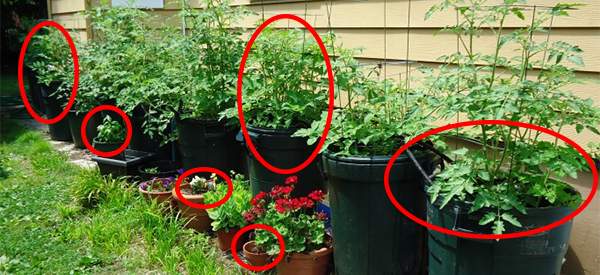
61 Fruits and Veggies You Can Grow in Buckets
I have a small lot with two large oak trees and I have planted some fruit trees. So there is plenty of shade and leaves to rake. But most of the sunshine I need for my garden falls on my back patio. My solution is container gardening.
In the beginning, we purchased beautiful pots and planted a decorative garden. But now my philosophy is that if it’s not edible or medicinal, I don’t grow it. And I grow in any container available: buckets, dish tubs, and a couple of raised gardens along the fence line.
The Advantages of Growing in Containers
I’ve discovered that you can grow most anything in a container and some crops are actually better off in a container. I can mix the soil to the preference of the crop: a nice acidic soil for my blueberry bushes and a loose sandy soil for root crops like carrots and radishes. Each plant gets the amount of water it needs and they sit next to each other with only a little space between them.
Container gardening makes it easy to plant a few new varieties each season without committing a large amount of space to them. My favorite thing about container gardening, however, is weeding. I get very few weeds in my pots and when I do, they are easily dealt with. I also get fewer pests and soil borne diseases.
What Can I Grow in Containers?
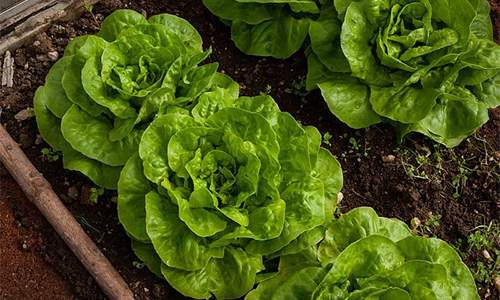
You can grow most everything in containers, but some plants do extremely well with very little care, while others take more attention. I live in Florida, so some of these plants might not grow in your area, but others not listed here will grow in your area. Don’t be afraid to try anything. Let’s start with the easiest to grow.
Leafy Greens like are easily grown in buckets or a dish pan. I like to start them early in the spring and plant them again in the fall with a few staggered plantings along the way. They usually bolt as soon as the weather turns hot, but I can extend the growing season in the winter by bringing them inside on the coldest nights.
Fortunately, we have mild winter weather in my area of Florida, so I can often grow these plants through most of the winter.
Here Are the Greens I Plant in Containers: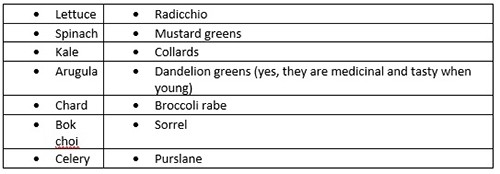
Herbs and Microgreens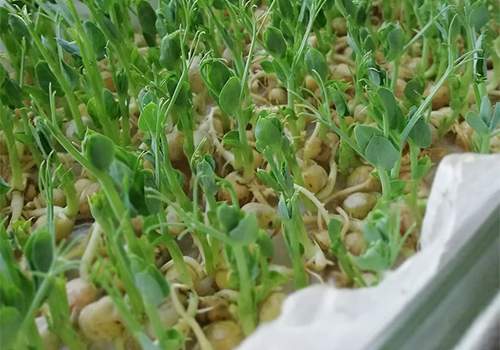
I could never get away with growing watercress in the ground in my area, but it is easier in a container. I just have to make sure it gets the right amount of water and I can enjoy it in my salads most of the year.
Likewise, I grow a nice selection of microgreens and sprouts for my salads including broccoli sprouts, cress, red clover, and spicy salad mix. I grow my microgreens on a shelf on the patio, giving me even more room for the rest of the garden. They get plenty of late afternoon sun there without drying out or burning.
Most of my herb garden also thrives in containers. I like being able to pick whichever herbs I want off the back patio rather than having to plan ahead and make an expensive trip to the store, only to have my supermarket herbs go bad in a few days.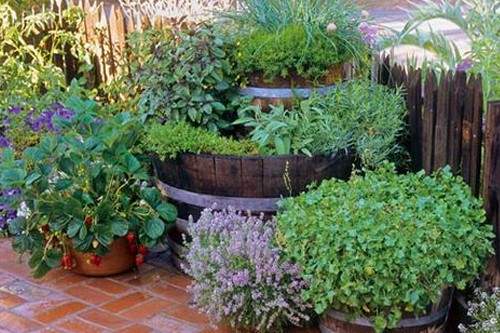 My rosemary bush usually survives year-round in its bucket, but most of my herbs are replanted in the spring and fall. Again, you could bring them in during extreme weather, if you wanted, or bring in a small plant to keep going over the winter. I have a small tower garden that holds most of my herbs and takes up very little space on the patio.
My rosemary bush usually survives year-round in its bucket, but most of my herbs are replanted in the spring and fall. Again, you could bring them in during extreme weather, if you wanted, or bring in a small plant to keep going over the winter. I have a small tower garden that holds most of my herbs and takes up very little space on the patio.
My French tarragon grows fairly well in a six-gallon bucket, but it would probably prefer a larger container. It likes a little more room for the roots. My container garden contains: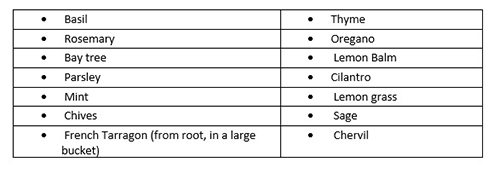
Related: How to Grow Potatoes in Shopping Bags for an Extended Harvest
Vegetable Crops
My favorite bucket plants are peppers and tomatoes. Both do very well in the spring and fall when temperatures aren’t too extreme. Tomatoes won’t set fruit if the daytime temperature is too high and this seems to be more of a problem in containers where the soil is also warmer. However, I can get a little longer season in the spring and early fall by moving the plant to a shady location when the temperatures get too high.
In Florida, because of the humidity, I have always had a problem with powdery mildew on squash, cucumbers, and melons. This is less problematic with container growing because my soil isn’t contaminated in the beginning and I keep the containers on the patio so that they have good drainage and no contact with infected soil. I’ve still had an occasional problem over the years, but not nearly as bad as growing in soil.
One issue with some container grown vegetables is pollination. If you have several pots of tomatoes, there will usually be no problem. But if you only have one tomato plant or one cucumber, or whatever, you might have to hand pollinate. It is easily done with an artist’s brush, but usually the wind or insects will take care of it for you.
For climbing vines like pole beans, cucumber, and some tomatoes, I place them next to the fence or I give them a tomato cage for support.
These vegetables grow well in containers with a little extra care: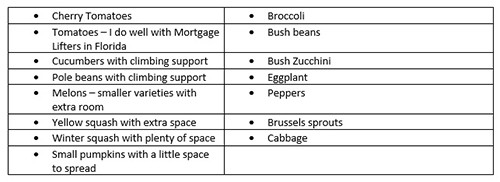
Root Crops That Grow Well in Containers
I’ve tried to grow root crops most everywhere I’ve lived with limited success, usually because of rocky or clay soil. But in a bucket or a deep dish pan, root crops are much more likely to do well because you can control the soil, moisture, and nutrients easily. I don’t grow many root crops, but they do well.
Fruits That Grow Well in Containers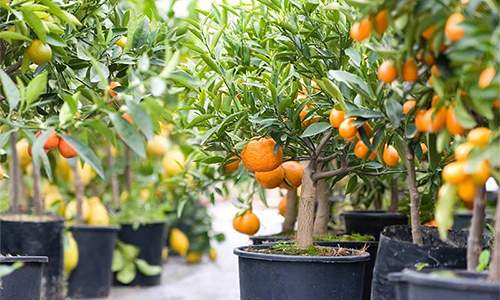
I wish I had planted my original fruit trees in containers, however when we purchased the property, I was anxious to plant and chose spots around the property. I originally planted a mango tree that produces a few fruits for the squirrels, a sour carambola that over produces, and a fig tree that succumbed to the lawn mower. If I had planted them in containers, I would have much better flexibility and more sunny spots for growing vegetables now.
I did learn my lesson, however, and now have quite a few fruits in containers. Surprisingly, these fruits do very well in containers:
An Unusual Success Story
As an aside, I gave my mother a potted lemon tree and a potted kumquat tree which she brought indoors through the winter for the first few years. As they got larger and produced well and outgrew their pots, she decided to plant them outdoors and see how they would do.
Now this sounds natural, knowing that I live in Florida. However, my mother lives in South Carolina, just across the Georgia state line at Augusta. It is much too cold in the winter for these trees, but they are thriving.
The first few years she covered them with sheets during freezes, but once they were established, she started leaving them on their own. Both trees are large now and produce more fruit than she can give away. Don’t be afraid to try growing a plant, even if it normally doesn’t grow in your area.
Related: 10 Bugs You Should Never Kill In Your Garden
Special Care for Container Plants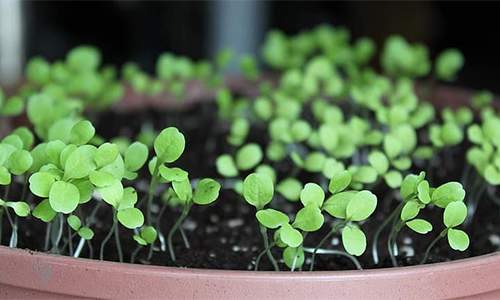
Container plants are a bit different than growing in the ground. A hot day can rob the soil of all moisture very quickly. I make sure my containers have plenty of drainage and I water them regularly. On the hottest Florida days, I drench the soil morning and night. If the plant is beginning to wilt, the leaves are crispy, or the soil is dry, give them water.
Another consideration for container gardens is fertilizer. Your plants need nutrients, especially if you are reusing the same soil every year. There are organic fertilizers available, as well as compost and other nutrients. You need to be aware of what the plant needs and provide it.
Leafy greens need plenty of nitrogen and a bit of the other nutrients. But fruiting vegetables need other nutrients for fruiting. I usually fertilize according to the recommendations for the individual plants. This takes more time but allows maximum yield for each plant.
Container Sizes
Most plants will do well in a 5-gallon bucket or a dishpan, however some plants need more space. Plants with a tap root prefer a deeper container and some need room to spread out. Take the plant growth habits into consideration when planning your garden and choosing the container.
Save the Seed Envelope
If you buy plants, read and save the tags. For seeds, I usually file the seed envelope for later consultation. Label your container with a stake that indicates what you planted and when in a permanent marker or paint. It is easy to forget after a few weeks have passed and all the leaves look alike.
You may also like:
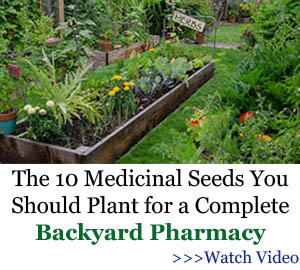 10 Beautiful Plants That Are Secretly Killing Your Garden
10 Beautiful Plants That Are Secretly Killing Your Garden
75+ DIY Projects For a Self-Sufficient Homestead (Video)
The Three Sister Garden Plans: How To Get The Most Out Of Every Square Foot
18 Plants That Should Always Be Planted Together
Comments 16